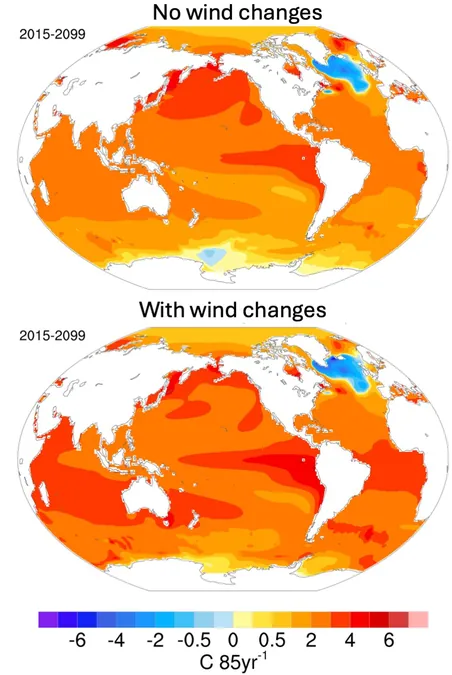
Winds of Change: The North Atlantic Cooling Phenomenon Could Intensify
2025-06-05
Author: Sophie
As the world battles climate change, one striking anomaly is taking shape in the North Atlantic—a vast area surprisingly cooling amid global warming known as the North Atlantic warming hole.
Stretching from Greenland to Ireland, this enigmatic region stands out as a blue patch on climate change maps, raising eyebrows and sparking intrigue among scientists. New research suggests that shifting wind patterns, driven by climate change, could amplify this cool zone's intensity in the coming decades.
A groundbreaking study recently published in the Journal of Climate reveals that by 2040, changes in wind-driven ocean circulation are likely to exacerbate the cooling effects in this region, despite the overarching trend of rising global temperatures.
Kay McMonigal, lead author and assistant professor at the University of Alaska Fairbanks, highlighted the paradox: "It’s an area that’s cooling even with global warming, and it’s expected to continue to cool in the future."
While scientists are striving to unravel the mysteries behind this relative cooling, they suspect that global circulation patterns play a pivotal role. The researchers utilized advanced computer models to simulate two scenarios—one incorporating changing winds and the other disregarding them.
Their findings indicate that, while immediate effects of wind changes might not hit the North Atlantic warming hole, by 2040, weaker winds will lead to enhanced cooling in the region for years to come.
Specifically, lighter winds would impede the mixing of warm subsurface waters, resulting in a cascading effect that spreads cooling throughout the area—from Newfoundland to Greenland.
These temperature shifts are crucial to predicting future climate outcomes, notably influencing precipitation and temperatures across Europe and beyond. Understanding the dynamics behind the North Atlantic warming hole is essential for developing accurate climate models.
As McMonigal stated, "There are significant implications for weather patterns, especially over Europe. To improve our predictions, we need to consider the role of these winds."
In addition to McMonigal, other contributors to the study include Melissa Gervais from Pennsylvania State University and Sarah Larson from North Carolina State University.









 Brasil (PT)
Brasil (PT)
 Canada (EN)
Canada (EN)
 Chile (ES)
Chile (ES)
 Česko (CS)
Česko (CS)
 대한민국 (KO)
대한민국 (KO)
 España (ES)
España (ES)
 France (FR)
France (FR)
 Hong Kong (EN)
Hong Kong (EN)
 Italia (IT)
Italia (IT)
 日本 (JA)
日本 (JA)
 Magyarország (HU)
Magyarország (HU)
 Norge (NO)
Norge (NO)
 Polska (PL)
Polska (PL)
 Schweiz (DE)
Schweiz (DE)
 Singapore (EN)
Singapore (EN)
 Sverige (SV)
Sverige (SV)
 Suomi (FI)
Suomi (FI)
 Türkiye (TR)
Türkiye (TR)
 الإمارات العربية المتحدة (AR)
الإمارات العربية المتحدة (AR)